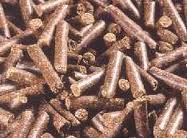Feeds for dairy cows
Feeds for dairy cows
Dairy Articles
By Kelly Myers, Dairy Science Graduate; Katharine Knowlton, Assistant Professor of Nutrition; and Gerald M. Jones, Professor and Extension Dairy Scientist; Department of Dairy Science, Virginia Tech.
Table of Contents
Nitrogen (N) Facts
Results of Nitrogen Contamination of Ground and Surface Water
Milk Urea Nitrogen (MUN) - A Tool to Monitor Protein Utilization
How high is too high for MUN levels?
Summary
Reference
By Charles C. Stallings, Extension Dairy Scientist, Nutrition, Virginia Tech.
It seems Australia has grown up on milk, and many continue to rely on it for their everyday diet. But how many take the time to consider the diet of the cows used to produce that milk? It’s a consideration dairy farmers can’t take for granted. The quality of feeds helps ensure the quality of the milk.
In the US, most cows/herds of cows increased milk production when owners provided feeds to cows in the form of a TMR even if they used the same feeds that they had previously fed, but as separate feeds. Most feeds can be used in a TMR, but attention must be given to the balance of the feeds to meet the cows’ needs as well as how the feeds are mixed in the TMR mixer so the feeds are adequately mixed. Adequate mixing means mixing a sufficient amount of time to get every thing mixed well, but not too much time which will cause the fiber in forages (hay, silage, straw) to become too small.
Out-of-parlour feeders may seem like yesterday's fad yet, according to Mark Holiday and Duncan Rose of Carrs Billington, they may yet prove a cost-effective way of maximising profits on many family-run farms.

